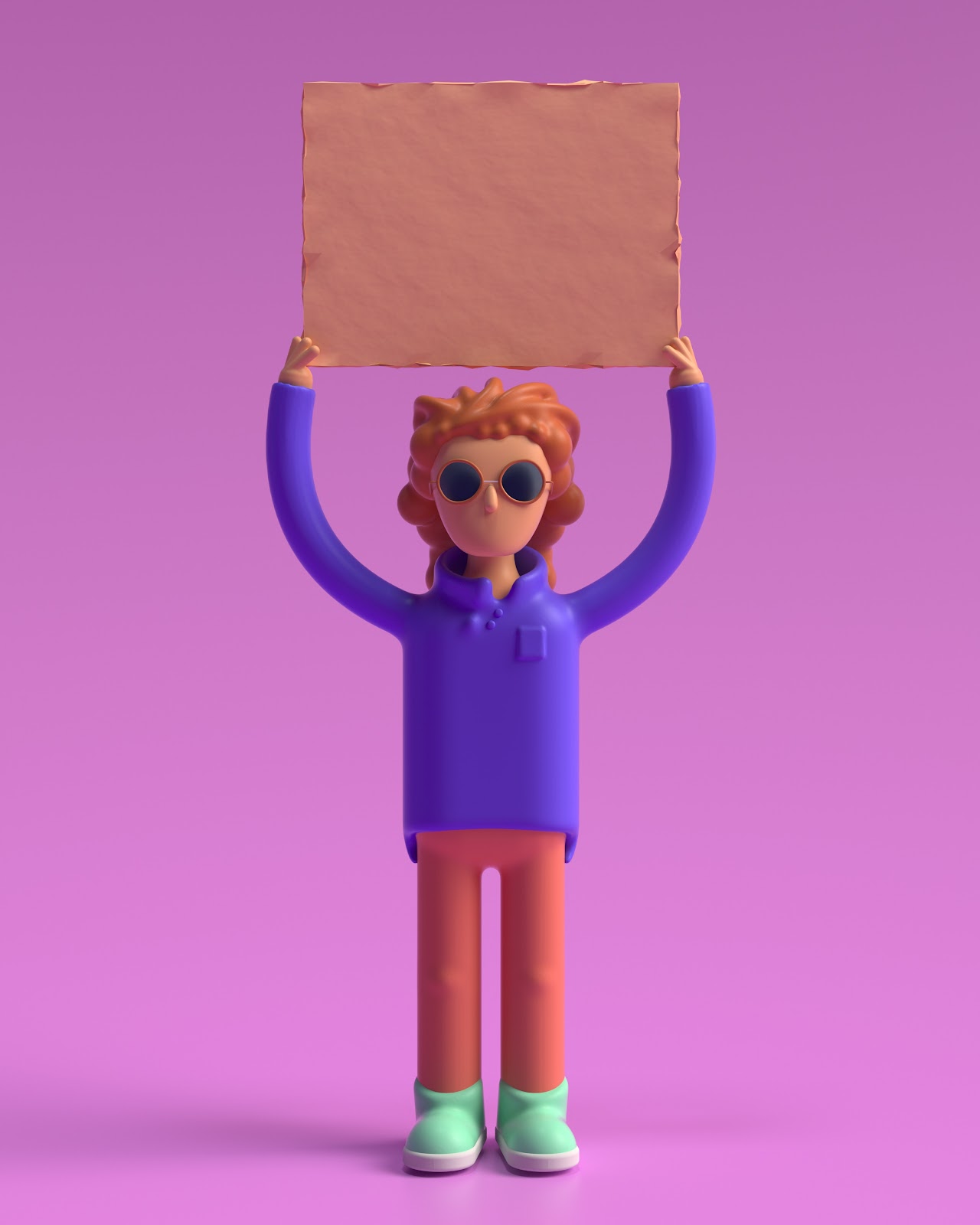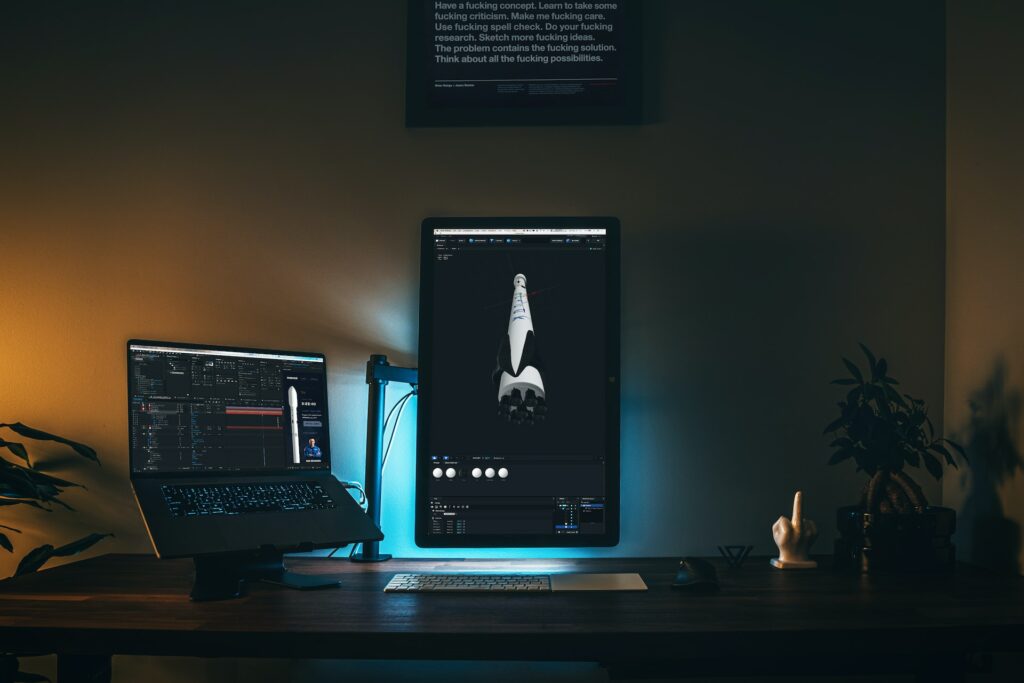
Enhance Your Visuals with High Poly 3D Models
In the past decade, some of the most highly acclaimed games shared a common feature – an extensive collection of breathtaking and intricate 3D models. Given our keen visual perception, it’s only natural for detailed game models and content to garner greater attention and appreciation. These intricate models, often referred to as high-poly game models, set the benchmark for exceptional 3D visuals.
If you’re curious to delve deeper into high-poly modeling and its role in game art design, you’ve come to the right place. This article will provide you with all the necessary details and tips to achieve high-poly game design.
What exactly is a High-Poly Model?
A high-poly model is a 3D asset with a significant number of polygons. Polygons can be visualized as 2D shapes that fit together like puzzle pieces, forming a complete 3D structure when combined in a polygonal mesh.
- To put it simply, let’s imagine creating a basic pyramid shape by connecting four triangles and a square. However, if you want the pyramid to exhibit visible bricks, each outward-facing side (triangle) will need to be divided into numerous rectangles. To add realism to the bricks, additional polygons can be introduced to depict small holes and cracks while modifying existing ones. In essence, incorporating more polygons allows for the inclusion of intricate details and features in your 3D model, resulting in a high-poly model that boasts an impressive level of visual fidelity.
- Comparison of 3D Models: High-Poly vs Low-Poly. The polygon count represents just one aspect of a model, with the other side being low-poly. Defining a clear boundary between what qualifies as low or high polygon count is subjective, as it depends on the level of detail present in the mesh. In simpler terms, a basic 3D object like a crate may not require an abundance of polygons to convey its details. Even 1000 polygons in such a case could be considered high-poly.
While some artists may utilize a range of 1-10K polygons as a general guideline for low-poly models, it is crucial to assess each object individually to determine what constitutes a high or low count.
When to Use High/Low-Poly Models?
A high-poly approach is typically recommended for game assets that will capture the player’s attention, such as main characters, their weapons, and essential items. In certain cases, high-poly models are solely used for renders, still images, or animations to maintain optimal game performance while offering visually stunning elements between gameplay sessions.
- On the other hand, a low-poly approach is chosen for different scenarios. Sometimes, time constraints limit an artist’s ability to add intricate details to every element. However, the more common factor is the lack of significance, where 3D assets exist in the background, at a distance, or in a barely noticeable manner, making the absence of fine details inconspicuous to players.
- Performance optimization is another crucial factor, as environments with fewer polygons render faster, ensuring smoother gameplay.
- To gain a better understanding of each approach, let’s examine two models created by our studio. Upon closer inspection, we immediately notice the raccoon model’s limited detail. The black nose tip consists of merely three polygons, and the entire head likely falls below 100 polygons. In contrast, the crab warrior model showcases impeccable detail, with each tiny ridge on its claw meticulously sculpted.
Both models are commendable in their own right, accomplishing their intended purposes. The raccoon serves as a secondary character in a game designed to run on low-performance devices. Therefore, it would be impractical to burden the game with unnecessary slowdowns just to enhance the appearance of a character that appears infrequently. Conversely, the crab warrior embodies intimidation and serves as a boss character, justifying the artists’ investment of time and effort to create a visually impressive entity.

Types of High-Poly Models Found in Games
In the realm of high-poly modeling for games, various types of assets are commonly created to enhance the visual experience. These include:
1. High-Poly 3D Character Models
Key game characters that players interact with extensively are often meticulously crafted with intricate details, ensuring their appearance is visually captivating.
2. High-Poly Building Models
While many buildings in games possess simple geometric shapes, elevating the polygon count and infusing unique features can enhance immersion and realism, making the structures more visually appealing.
3. High-Poly Vehicles
The allure of sleek and stylish vehicles resonates with many players, making high-poly vehicle models a desirable addition that adds positive vibes to the gaming experience.
4. High-Poly Environments
Designing immersive and detail-rich game worlds is a winning strategy to entice players to explore and spend more time within the virtual environment.
5. High-Poly Weapons/Instruments
Distinctive and memorable weapon and tool designs are vital for setting them apart from generic counterparts and designs seen in other games.
6. High-Poly Props
Props, often receiving less attention compared to other assets, can still captivate players when given the high-poly treatment. Devoting time to their creation can impress players and give the impression that every detail has been considered.
Creating Impressive High-Poly Models: The Approach
With decades of experience in 3D design, the key ingredients for crafting amazing high-poly models are time and meticulousness. Devoting ample time allows for the inclusion of necessary details in the models. The ultimate outcome and visual appeal of these details depend on the art team’s experience and creative vision.
To embark on creating high-poly models, one must first decide on an approach, which is typically determined by the knowledge of the model itself:
1. Converting Existing Models to High-Poly
If you possess an existing model that requires more detail, a common method is subdivision surface modification. This process involves splitting a selection of polygons into multiple subdivisions (usually 4x), resulting in an increased number of vertices. These additional polygons enable the creation of new edges, bulges, and curves, enhancing the model’s detail. Specialized applications like Blender or ZBrush might be more suitable for this task, as the standard features of programs like 3Ds Max might present challenges.
2. Custom Polygonal Modeling
When creating a new model based on concept art, approximate references, or imagination, starting from scratch in a modeling application is often necessary. Programs like Blender, Maya, and 3DS Max are popular choices, offering a wide range of additional functionalities such as rigging and texture mapping. For instance, one can begin with a basic shape like a cube and manipulate its edges and dimensions until it takes the desired form.
3. Utilizing Scans and Photogrammetry
Creating a 3D model becomes easier when a detailed reference is available. Scanning an object or capturing a series of photos from various angles allows for the recreation of its features in specialized software. This technique is not limited to imagined objects; real-life landmarks and environments are often recreated through scans and photogrammetry in high-poly game asset creation.
Further Integration of High-Poly Models
Creating a high-poly model is only the initial step in the process. Several integration steps follow, depending on the model’s intended use. For a still render, one can create a scene featuring the model and capture the image. However, other media forms require additional steps. These include creating texture maps, defining materials and lighting to give the model color and ensure its harmonious integration into a scene. If the model is meant to move and perform actions, defining its skeleton and completing the rigging process is necessary. Further behaviors and interactions can be implemented within the chosen game engine.
Further Integration of High-Poly Models: Bringing Them to Life
After the creation of a high-poly model, the journey doesn’t end with its completion. Integration into the game involves additional steps to bring the model to life and ensure its seamless interaction within the virtual environment. These steps vary depending on the intended purpose and functionality of the model.
For static renders or still images, the process is relatively straightforward. Once the high-poly model is created, artists can design a suitable scene, applying appropriate lighting, materials, and textures to enhance its visual appeal. This meticulous attention to detail ensures that the model blends harmoniously into the overall composition, resulting in a captivating image that captures the essence of the design.
- However, when it comes to interactive elements such as animated characters or objects, further steps are required. One crucial aspect is the creation of a texture map, which adds color, texture, and surface details to the model. This process involves carefully painting or applying pre-made textures to different parts of the model, giving it a lifelike appearance.
- To enable movement and animation, rigging comes into play. Rigging involves defining a skeletal structure within the model, consisting of interconnected bones that dictate how the model deforms and moves. Artists carefully assign each vertex of the model to the corresponding bone, allowing for realistic and natural movements. This process is essential for characters, as it enables actions like walking, running, and various gestures.
- Once the rigging is complete, animators can bring the model to life by creating keyframe animations or utilizing motion capture techniques. Keyframe animations involve manually setting specific poses or movements at different points in time, while motion capture involves recording real-life movements and applying them to the model. Both methods contribute to dynamic and realistic animations that enhance the overall gaming experience.
In addition to animation, high-poly models often require interaction with the game world and other objects. This can be achieved through programming and scripting within the chosen game engine. Developers implement functionalities such as collision detection, physics simulation, and object interactions to ensure seamless integration of high-poly models into the game environment. For example, a high-poly weapon model may require accurate collision detection to ensure that it interacts realistically with other objects, such as enemies or the environment itself.
To wrap up
Optimization is another important consideration during integration. While high-poly models are visually impressive, they can also be resource-intensive. Game engines and hardware have limitations in terms of rendering capabilities and performance. Therefore, optimizing high-poly models is necessary to maintain a smooth and enjoyable gaming experience. Techniques such as level-of-detail (LOD) systems, which dynamically reduce the model’s complexity based on the viewer’s distance, can be employed to balance visual fidelity with performance requirements.
In conclusion, the process of integrating high-poly models into games involves various steps, from texture mapping and rigging to animation and interaction programming. The careful consideration of optimization techniques ensures that these visually intricate assets can be seamlessly integrated into the game world without sacrificing performance. As technology evolves, high-poly models continue to push the boundaries of visual fidelity, creating immersive and captivating gaming experiences for players around the world.